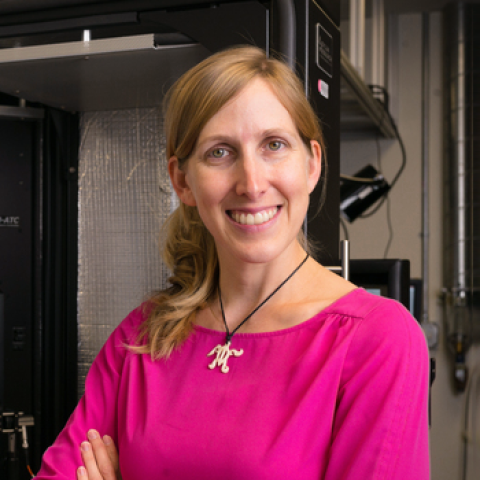Interdisciplinary Initiatives Program Round 10 - 2020
Craig Levin, Radiology
Jennifer Dionne, Materials Science & Engineering
Positron emission tomography (PET) is a non-invasive imaging technology used every day throughout the world that enables visualization and quantification of the molecular signatures of disease in living subjects in the clinic as well as in biological research. The advanced technique of time-of-flight (ToF) PET enables much better lesion detection and quantification, and drastically reduced injected dose or study duration, but requires excellent photon arrival time resolution in the detector. Using conventional scintillation detection, the fundamental limit in PET time resolution is strongly dependent on the inherent temporal variance generated during the scintillation process, yielding an intrinsic physical limit of around 100 picoseconds (ps). In this project, we propose to explore using nanophotonics approaches to develop a metamaterial crystal that enhances the light yield and decreases the decay time of scintillation crystals with the ultimate goal of achieving less than 10 picosecond (ps) annihilation photon pair coincidence time resolution, which is an order of magnitude better than possible with conventional scintillation based PET detectors. If successful, the proposed < 10 ps coincidence time resolution would represent a tremendous paradigm shift for PET: The enhanced photon ToF information would bring substantial signal amplification over existing systems. This is an exciting multi-disciplinary project that requires collaboration between researchers in multiple fields including radiology, medical imaging, nuclear physics, optics and photonics, materials science, electrical engineering and applied physics with a goal of enabling substantial improvements in ToF PET performance to drive important advances in the study and clinical management of cancer,cardiovascular disease and neurological disorders.



